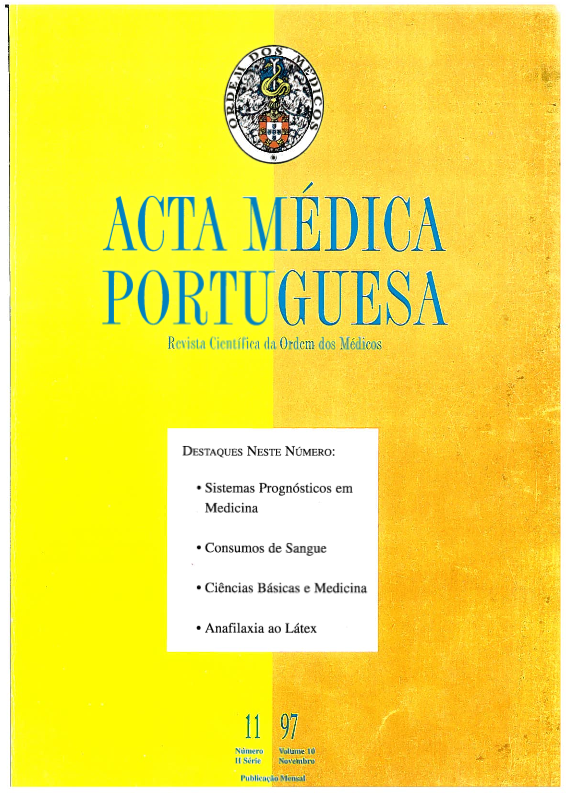Estratificação de risco e prognóstico em doentes cirúrgicos críticos utilizando o Sistema Acute Physiology, Age and Chronic Health III (APACHE III).
DOI:
https://doi.org/10.20344/amp.2504Resumo
Outcome prediction in critical surgical patients admitted to intensive care units (ICU) has been established using several scoring systems. To evaluate the predictive performance of the Acute Physiology, Age and Chronic Health Evaluation (APACHE III) scoring system in these patients, we studied a population admitted to a surgical ICU in our University Hospital.We collected prospective data on 220 consecutive patients admitted over a period of 12 months. APACHE III (A3) scores were obtained over the first 24 hours of ICU admission (APACHE II scores were also calculated); data also included age, sex, acute and chronic diseases, ICU and hospital length of stay (LOS), patient location prior to ICU admission and outcome. The relationship of hospital mortality with A3 scores was analyzed using logistic regression, with the discriminatory power of these systems being assessed by the area under the ROC curve and percentage of correct classification.Patient's mean age was 57 +/- 17 years and 44% were male; 53.6% were elective and 46.4% were emergency postoperative patients; 5% of patients had co-morbidities; ICU mortality rate was 10% and in-hospital mortality rate (HMR) was 15%; mean ICU LOS was 3.9 +/- 5.6 days and mean hospital LOS was 9.4 +/- 8.2 days; mean scores were: APACHE III = 33 +/- 2 and APACHE II = 9 +/- 6 points. There was a significant relationship between ascending A3 scores and HMR. APACHE III had a correct classification rate of 87.3% and an area under the ROC curve of 0.830.In a population of critical surgical patients admitted to our ICU the APACHE III scoring system demonstrated an excellent prognostic performance as measured by contingency tables and areas under the ROC curve; this system can be a useful tool for outcome prediction in critical surgical patients.Downloads
Downloads
Como Citar
Edição
Secção
Licença
Todos os artigos publicados na AMP são de acesso aberto e cumprem os requisitos das agências de financiamento ou instituições académicas. Relativamente à utilização por terceiros a AMP rege-se pelos termos da licença Creative Commons ‘Atribuição – Uso Não-Comercial – (CC-BY-NC)’.
É da responsabilidade do autor obter permissão para reproduzir figuras, tabelas, etc., de outras publicações. Após a aceitação de um artigo, os autores serão convidados a preencher uma “Declaração de Responsabilidade Autoral e Partilha de Direitos de Autor “(http://www.actamedicaportuguesa.com/info/AMP-NormasPublicacao.pdf) e a “Declaração de Potenciais Conflitos de Interesse” (http://www.icmje.org/conflicts-of-interest) do ICMJE. Será enviado um e-mail ao autor correspondente, confirmando a receção do manuscrito.
Após a publicação, os autores ficam autorizados a disponibilizar os seus artigos em repositórios das suas instituições de origem, desde que mencionem sempre onde foram publicados e de acordo com a licença Creative Commons









